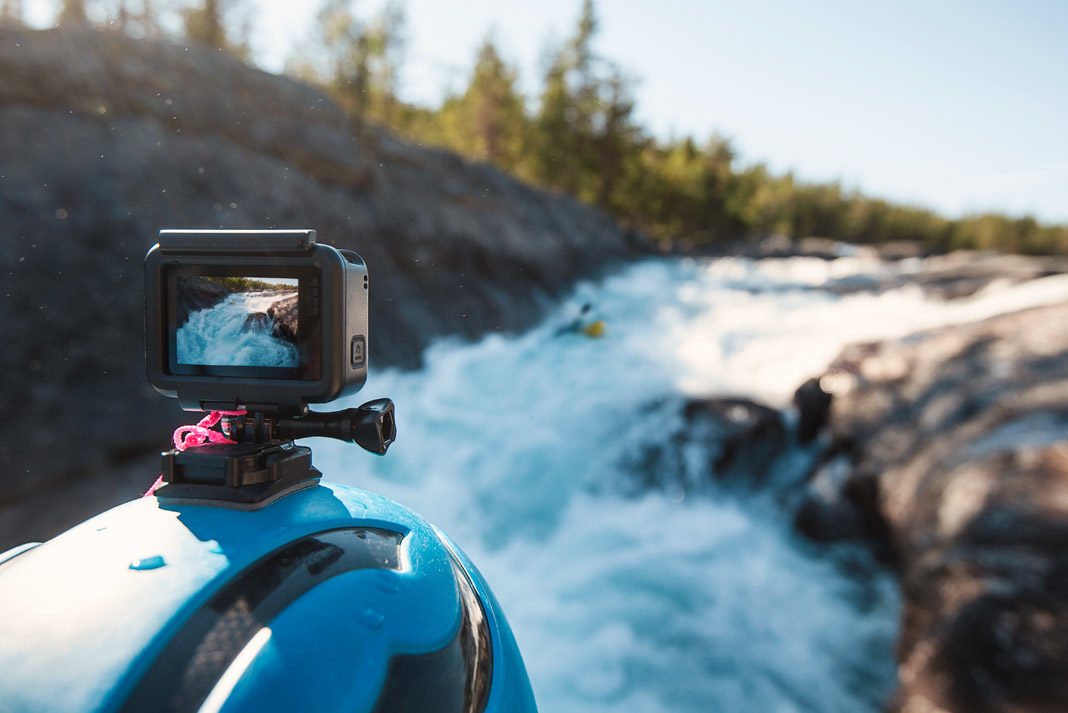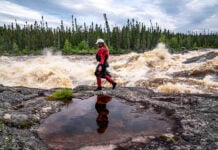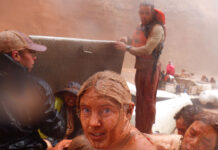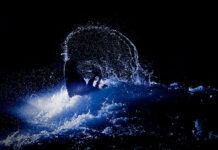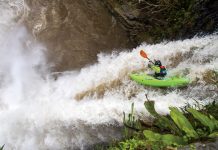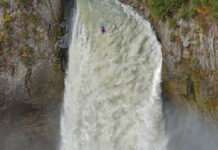The convergence of rapidly improving camera technology and the dramatic rise in social media use over the past decade has changed the way we paddle.
For many paddlers, packing a camera to capture the action is almost as important as packing a paddle. A decade ago, adventure photography remained the domain of a few skilled individuals, carting heavy equipment and protective, waterproof housing. Today, adventure photography is accessible to anyone with a few hundred dollars to spare.
The company largely responsible for changing how outdoor sports are recorded is GoPro. Launched in 2002 by American Nick Woodman, he wanted to create a camera for consumers to capture professional quality action photos. The turning point for the company came in 2006, when GoPro launched the groundbreaking Digital Hero, a tiny, but durable digital camera capable of shooting 640×460 photos and 10-second 320×240 video clips.
While the quality couldn’t match even the early digital SLR cameras, the size and video capabilities changed the game of capturing outdoor adventures. In the 12 years since, GoPro has released nearly two dozen variations of its Hero line of cameras. The latest is a top-of-the-line Hero6 Black—a waterproof, image-stabilized camera capable of 12-megapixel photos and 4k, 60fps video.
GoPro obviously isn’t the only action camera on the market. But competitors such as JVC, Sony, Nikon and Garmin, along with many knockoffs, haven’t overcome the original action camera’s reputation for simplicity, quality and remarkable durability.
One company providing remarkable competition is DJI, a Chinese drone manufacturer launched in 2006. Like GoPro with action cameras, DJI has been the leader in groundbreaking unmanned aerial vehicle (UAV) technology for both commercial and consumer use. And also like GoPro, it’s hardly the only drone brand, but it holds a massive market share, said to be close to 85 percent for the consumer market.
Aerial photography has come a long way since Gaspar Félix Tournachon took the first successful aerial photograph in 1858 from a hot air balloon tethered 262 feet above Paris.
While DJI’s commercial drones are now being used to film blockbuster movies, the company’s inexpensive entry-level drones can be flown by just about anyone and have onboard, gimbal-stabilized cameras capable of 4K video and 12-megapixel images.
We have always been trying to make the best flying cameras we possibly can and keep the price point as accessible as possible,” said Michael Oldenburg, senior communication manager for DJI North America. “It’s all an effort to help people capture life’s moments from a new perspective.
Sure, paddlers use them for getting incredible shots and rarely-before-seen angles, but you could argue it’s just progression in aerial photography. What is innovative is how drones are being used to scout rapids and by search and rescue organizations across North America.
The company’s latest drone is the Mavic Air, an $800 consumer UAV folding small enough to fit in a jacket pocket. It’s packed with the latest camera and drone features such as Smart Capture mode, allowing users to take photos using gestures, and Active Track, so the drone will follow you as you paddle away.
You don’t need someone on shore filming you anymore,” said Oldenburg. “That’s one of the great uses for drone technology. We’ve tried to make it easy, even if you don’t have a lot of flying experience.
What’s the next investment when your paddling kit already includes a GoPro Hero6 and a DJI Spark or Mavic Air? Go full 360. Many believe virtual reality is the next big technological shift. While its adoption has been slow, the camera technology to capture 360-degree images and video is rapidly improving.
A handful of brands such as Ricoh, GoPro, Garmin, Samsung and even Kodak—yes, that Kodak—now make palm-sized 360-degree cameras capable of shooting incredibly high-quality images. Postproduction software allows you to grab single, traditionally-cropped images from literally any angle. It’s like having dozens of high-quality cameras mounted to the front of your kayak and pointed in every direction.
For better or worse, armchair adventurers will soon be able to enjoy the most extreme river experiences without ever getting wet.
Paddling addicted journalist Dan Dakin worked as a sports reporter for 12 years before becoming a full-time freelance writer. | Feature Photo: Tegan Owens


